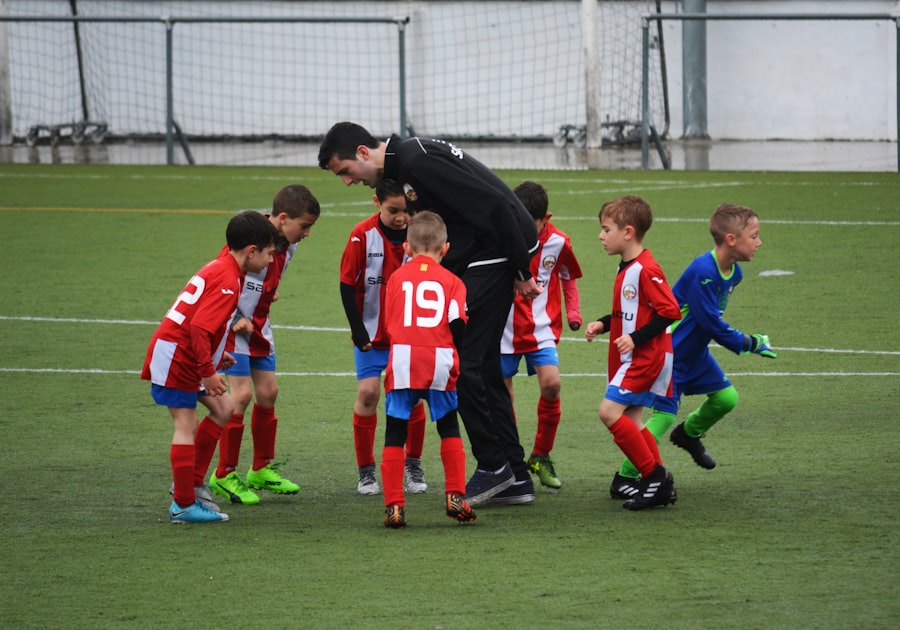Positive reinforcement training is a widely recognized and effective method for teaching dogs desirable behaviors. This approach is grounded in the principle of rewarding a dog for exhibiting a specific behavior, thereby increasing the likelihood that the behavior will be repeated in the future. The rewards can take various forms, including treats, praise, toys, or even playtime.
For instance, when a dog sits on command and receives a treat immediately afterward, it creates a positive association with the action of sitting. Over time, the dog learns to associate the command with the reward, making it more likely to respond correctly in the future. This training method not only fosters a strong bond between the dog and its owner but also promotes a positive learning environment.
Dogs trained through positive reinforcement are often more eager to learn and participate in training sessions because they associate these experiences with fun and rewards. For example, a dog that is consistently rewarded for walking calmly on a leash will be more inclined to behave in that manner during walks. This method contrasts sharply with aversive training techniques, which can lead to fear and anxiety in dogs, ultimately damaging the trust between the pet and its owner.
Key Takeaways
- Positive reinforcement training is an effective method for teaching and reinforcing desired behaviors in dogs.
- Consistency and patience are key when training a dog, as it takes time for them to learn and understand commands.
- Clear communication with commands is essential for a dog to understand what is expected of them.
- Socialization and exposure to different environments and situations are important for a well-rounded and well-behaved dog.
- Understanding canine behavior can help in addressing and preventing unwanted behaviors in dogs.
- Setting boundaries and rules helps to establish a structure and routine for the dog to follow.
- Using reward-based training methods encourages positive behavior and strengthens the bond between the dog and owner.
- Seeking professional help from a certified dog trainer or behaviorist can be beneficial if struggling with training or behavior issues.
Consistency and Patience
Consistency is a cornerstone of effective dog training. When commands and expectations are applied uniformly, dogs are better able to understand what is required of them. For instance, if an owner uses different commands for the same action—such as saying “come” one day and “here” the next—the dog may become confused and less responsive.
Establishing a consistent set of commands and sticking to them helps reinforce learning. Additionally, consistency extends beyond verbal commands; it also includes body language and tone of voice. If an owner appears uncertain or inconsistent in their demeanor, the dog may pick up on this ambiguity and become hesitant or anxious.
Patience is equally crucial in the training process. Dogs do not learn at the same pace, and some may require more time to grasp certain commands or behaviors than others. An owner who exhibits patience will create a more supportive environment for their dog, allowing it to learn without the pressure of immediate success.
For example, if a dog struggles to master the “stay” command, an owner who remains calm and patient can gradually increase the duration of the stay while providing positive reinforcement for small successes along the way. This approach not only aids in learning but also strengthens the bond between the dog and its owner.
Clear Communication with Commands

Effective communication is vital in dog training, as it lays the foundation for understanding between the dog and its owner. Clear commands help eliminate confusion and ensure that the dog knows exactly what is expected of it. Using simple, distinct words for commands is essential; for instance, using “sit” instead of a longer phrase like “please sit down” can make it easier for the dog to comprehend what is being asked.
Additionally, maintaining a consistent tone of voice can further enhance clarity. A firm yet encouraging tone can convey authority while still being inviting. Moreover, incorporating hand signals alongside verbal commands can significantly improve communication.
Dogs are adept at reading body language, so pairing a verbal command with a corresponding gesture can reinforce understanding. For example, raising a hand palm-up while saying “sit” can help solidify the command in the dog’s mind. This dual approach not only aids in comprehension but also provides an alternative means of communication in situations where verbal commands may not be heard, such as in noisy environments.
Socialization and Exposure
| Category | Metric | Value |
|---|---|---|
| Socialization | Number of social interactions | 50 |
| Exposure | Reach on social media | 1000 |
| Socialization | Attendees at events | 200 |
Socialization is an integral aspect of raising a well-adjusted dog. Exposing a puppy to various environments, people, and other animals during its formative months can significantly influence its behavior as an adult. Early socialization helps prevent fear-based reactions and aggression later in life.
For instance, introducing a puppy to different types of people—children, adults, and seniors—can help it learn to interact positively with various individuals. Similarly, exposing it to different environments, such as parks, busy streets, or pet-friendly stores, can help it become more adaptable and confident. The process of socialization should be gradual and positive to ensure that the dog feels safe and secure during these experiences.
For example, if a puppy appears anxious around larger dogs, it may be beneficial to introduce it to calm, well-mannered dogs first before progressing to more boisterous playmates. Positive reinforcement can also play a role here; rewarding the puppy with treats or praise during successful interactions can help reinforce good behavior and create positive associations with new experiences.
Understanding Canine Behavior
A comprehensive understanding of canine behavior is essential for effective training and fostering a harmonious relationship between dogs and their owners. Dogs communicate primarily through body language, vocalizations, and facial expressions. Recognizing signs of stress or discomfort—such as tail tucking, lip licking, or avoidance behaviors—can help owners respond appropriately to their dog’s needs.
For instance, if a dog is showing signs of fear during a training session, it may be necessary to adjust the approach or take a break to prevent overwhelming the animal. Additionally, understanding breed-specific traits can provide valuable insights into behavior patterns. Certain breeds may have innate tendencies that influence their actions; for example, herding breeds like Border Collies may exhibit strong instincts to chase or herd moving objects.
Recognizing these traits allows owners to tailor their training methods accordingly. By aligning training techniques with an understanding of natural behaviors, owners can create more effective strategies that resonate with their dog’s instincts.
Setting Boundaries and Rules

Establishing clear boundaries and rules is fundamental in creating a structured environment for dogs. Dogs thrive on routine and predictability; when they understand what is expected of them, they are more likely to feel secure and behave appropriately. For instance, setting rules about where the dog is allowed to go within the home—such as keeping off furniture or staying out of certain rooms—helps define acceptable behavior.
Consistently enforcing these boundaries reinforces learning and helps prevent confusion. Moreover, boundaries should be communicated clearly and enforced consistently by all family members. If one person allows the dog on the couch while another does not, it creates mixed signals that can lead to behavioral issues.
By ensuring that everyone in the household adheres to the same rules, owners can create a cohesive environment that fosters good behavior. Additionally, incorporating positive reinforcement when boundaries are respected can further encourage compliance; rewarding a dog for staying off furniture reinforces that rule positively.
Using Reward-Based Training Methods
Reward-based training methods are at the heart of positive reinforcement techniques and have been shown to yield effective results across various training scenarios. This approach emphasizes rewarding desired behaviors rather than punishing unwanted ones. For example, if a dog jumps up on guests when they arrive at home, instead of scolding it for this behavior, an owner could redirect its attention by asking it to sit and rewarding it when it complies.
This method not only teaches the dog what is expected but also encourages it to engage positively with guests. Incorporating various types of rewards can enhance motivation during training sessions. While treats are often used as primary rewards, incorporating toys or playtime can also be effective motivators for some dogs.
For instance, using a favorite toy as a reward for successfully completing a command can make training sessions more engaging and enjoyable for both the dog and its owner. The key is to identify what motivates each individual dog and tailor rewards accordingly.
Seeking Professional Help if Needed
While many owners successfully train their dogs using positive reinforcement techniques and consistent methods, there are instances where seeking professional help becomes necessary. Some dogs may exhibit behavioral issues that require specialized knowledge or experience to address effectively. For example, if a dog displays aggressive tendencies towards other animals or people, consulting with a certified professional dog trainer or animal behaviorist can provide valuable insights into managing these behaviors safely.
Professional trainers often bring expertise in specific training methods or behavioral modification techniques that can be beneficial in challenging situations. They can assess individual cases and develop tailored training plans that address specific issues while considering the dog’s unique personality and background. Additionally, group classes led by professionals can provide socialization opportunities for dogs while offering owners guidance on effective training strategies in a supportive environment.
In conclusion, understanding these fundamental aspects of dog training—positive reinforcement techniques, consistency and patience in communication, socialization practices, canine behavior comprehension, boundary setting, reward-based methods, and when to seek professional assistance—can significantly enhance the training experience for both dogs and their owners alike. Each element plays a crucial role in fostering a well-behaved pet that thrives within its environment while building a strong bond with its human companions.
FAQs
What are some common dog training techniques?
Some common dog training techniques include positive reinforcement, clicker training, leash training, and obedience training. Positive reinforcement involves rewarding good behavior with treats or praise, while clicker training uses a clicker to mark desired behavior. Leash training focuses on teaching a dog to walk calmly on a leash, and obedience training involves teaching basic commands such as sit, stay, and come.
What is positive reinforcement in dog training?
Positive reinforcement in dog training involves rewarding a dog for exhibiting desired behavior. This can be done with treats, praise, or toys. The idea is to encourage the dog to repeat the behavior by associating it with a positive outcome.
What is clicker training for dogs?
Clicker training for dogs is a method of training that uses a small handheld device called a clicker to mark desired behavior. When the dog performs the desired behavior, the trainer clicks the clicker and then rewards the dog with a treat or praise. This helps the dog understand which behaviors are being rewarded.
How does leash training work?
Leash training involves teaching a dog to walk calmly on a leash without pulling or lunging. This is typically done by using positive reinforcement to reward the dog for walking nicely on the leash and by using gentle corrections to discourage pulling.
What is obedience training for dogs?
Obedience training for dogs involves teaching basic commands such as sit, stay, come, and down. This type of training helps to establish a clear line of communication between the dog and the owner and can help to improve the dog’s behavior in various situations.
